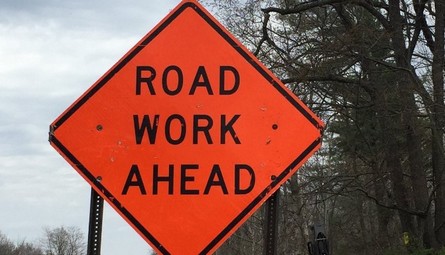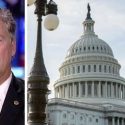Four essential elements of a winning infrastructure plan
Mark Aesch,
In April of 1987 I was making the long trek across upstate New York heading back to college. Little did I know that less than 10 miles behind me, a bridge across the New York State Thruway had given way, sending 10 unsuspecting motorists plunging into the Schoharie River.
Fast forward to the summer of 2007, the entire nation watched in horror as a massive chunk of the I-35 bridge, crossing the Mississippi River just outside of Minnesota, gave way in rush hour traffic sending 13 people to their death and injuring nearly 150 Americans.
The next day on the banks of the river, politicians wrung their hands.
Democrats and Republicans alike always take a September 12th mindset to infrastructure failures. Our leaders intone that “we can make certain this never happens again” – until it does.
We should all remember Minnesota Governor Tim Pawlenty holding a news conference, just days after the I-35 bridge collapse, acknowledging that the bridge had been rated as “structurally deficient” for a full 17 years.

Today alone, nearly 500 trains will cross the Portal Bridge in New Jersey. Those trains will carry nearly 200,000 passengers. It is the busiest train bridge in the Western Hemisphere. The Portal Bridge is 105 years old.
Presidents and other elected officials have ignored this foundational responsibility of government for decades now.
Right now, there are more than 600,000 bridges in our nation that are knowingly rated to be “obsolete or structurally deficient.”
President Trump has made it clear that he will not stand silently by and wait for the infrastructure equivalent of September 11th.
I’m offering four key points critical to the impending debate.
1. We need to prioritize our spending. An infrastructure bill can’t be to fund every pet project for every Member of Congress. The federal government just set a record for revenue. Washington, DC does not need more money - it needs to spend our money smarter and on the right priorities. Elected officials love to cut ribbons next to new bridges. Let’s fix the ones that exist today or close them.
2. Pour concrete rather than fund pensions. A full 30 percent of the so called “stimulus spending” under President Obama in 2009 went to fund bureaucracy.
3. Reduce regulations. A perfect example of government run amuck and wasting taxpayer dollars is the New York State Wicks Law. Passed in 1924 to protect union laborers, the law requires that on all public projects, separate contracts must be let for plumbing, HVAC, and electrical. It is estimated that this antiquated law adds as much as 30% to construction projects. This taxpayer dollar sucking regulation must be eliminated.
4. Bring in private capital. After more than 50 years of public operation, Indiana recently privatized a more than 150 mile toll road in a nearly $4B contract. Rather than forcing taxpayers to foot the bill for modernization and enhanced customer improvements, the State of Indiana struck an arrangement to lease the toll road for the next 75 years to private operators that will improve the highway through user fees.
Infrastructure investment does not poll high. It’s not at the top of American’s list of priorities. But it is critical that our roads, bridges, dams and energy grid are those of a first world nation.
Today, China spends more on infrastructure than all of Europe and the United States, combined!
President Trump is putting a stake in the ground by saying and demonstrating that the safety of Americans is his top priority.
President Roosevelt had his Civilian Conservation Corp to create manually skilled labor jobs during the Great Depression. President Kennedy rallied the nation to “send a man to the moon and back safely by the end of the decade.” President Eisenhower inspired the national highway network we use to travel each and every day.
This 21st century modernization initiative will make Americans safe, create good paying jobs, and demonstrate to over burdened taxpayers that government can actually deliver real value.
Mark Aesch is CEO of TransPro, a performance management consultancy focused on helping transportation organizations to perform at higher levels of efficiency with strategic planning, customer satisfaction survey and reporting services, and executive leadership coaching. Mr. Aesch is a former District Director for U.S. Representative Bill Paxon, former CEO of the Rochester, NY Transportation Authority, and former Senior Advisor for the City of Detroit.





